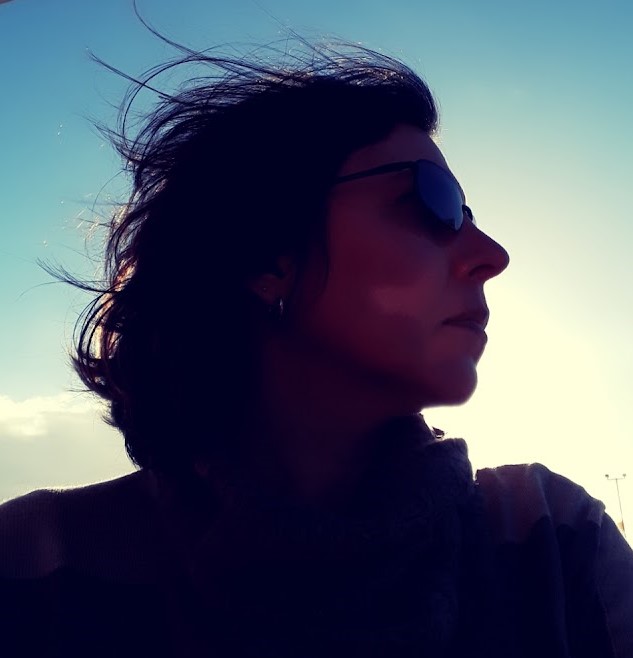Thatiana Valdivia Murillo was born on October 14, 1972 in Rio de Janeiro city. At 18, she graduated from high school with an inclination for the biological & humanity areas. She chooses the latter and begins journalism school at PUC/RJ (Catholic Pontificial University/Rio de Janeiro) in Jan. 1991. She graduates in 1995 and in Sept. that same year, she is selected to attend the XIII Abril's journalism course of Abril publishing house in São Paulo, where she makes her first and brief professional contacts in the communication area.
Without getting the permament vacancy upon finishing the course, she returns to Rio and in Aug. 1996 and goes to History College at UFRJ (Rio de Janeiro Federal University). She becomes interested in the research field while doing experiments at the Social Science and Philosophy Institute of UFRJ.
In 1997, through a university fellow indication, she is selected to work at the CPDOC (Research center and documentation of the Getúlio Vargas foundation) as betterment scholarship of CNPQ. She joins the historic Brazilian biography dictionary project and she is guided by the institution researchers. She stays there as a scholar for 2 years.
She continues to work as a trainee for a couple of months at the Vivamusica communication agency and begins a cultural journalism specialization at UERJ (Rio de Janeiro State University), but quits the program. At this time, with a college friend, they publish a university tabloid (History and Memory), that is distributed to the major universities of Rio during 1998.
Despite the betterment scholarship ending in 1999, she continues to work for CPDOC as an independent on a research project until 2002, as well as contributing to other institutions such as: Memória Brasil (Brazil Memory) and Casa de Rui Barbosa (Rui Barbosa's House) in later dates.
In 2001, as an independent, she begins to accomplish some cultural issues work for sites and foreign tabloids, writing articles, notes and doing interviews. She does some short text review work for research institutions and quick Vivamusica project assistance.
In 2002, as a history guiding teacher at Anglo-Americano school which was the former Botafogo headquarter, she leaves after 2 months due to a timetable unsuitable for research work. That same year, she graduates in history together with its full education licentiateship.
In 2003, due to personal reasons, she travels to Spain with the purpose to live in Valladolid. Her expectations don't come true, so she decides to come back to Brazil and begins to study Spanish at the Brazilian Hispanic Culture Institution. She completes the course in Aug. 2004 and becomes a history teacher at private schools for 2 years.
In 2005, availing pedagogic structure of the History course and journalism knowledge, she goes to Veiga de Almeida University to accomplish her third degree within one and half years, licentiateship in Portuguese and Spanish languages - with the goal to teach the latter.
In 2007, having the languages diplomas, she begins postgraduate studies in teaching, also at Veiga de Almeida University, finishing the following year. In 2008, has her first Spanish teaching experiences, teaching young people and adults in private institutions.
In Feb. 2009, through public examination approval the year before it, she begins to teach Spanish at Angra dos Reis town. Since early times, Thatiana showed great interest in the arts. She dedicates a great part of her time to learn many activities such as dance, music, plastic arts, movies, theatre. She has completed many extension courses in her cultural field.
In 2016 she founded the Caminha Rio Movement with Valmir de Souza, with which she also became a militant of walking and accessibility. Working in this new area comes from a difficult family experience that leaves her mother with reduced mobility after a stroke in late 2014. Inspired by several existing movements in São Paulo, where Valmir resides and works with accessibility, they initiate a series of actions in the city of Rio in an attempt to draw attention from civil society and public power to the scarce policies directed at pedestrians.
In 2016 she founded the Caminha Rio Movement with Valmir de Souza, with which she also became a militant of walking and accessibility. Working in this new area comes from a difficult family experience that leaves her mother with reduced mobility after a stroke in late 2014. Inspired by several existing movements in São Paulo, where Valmir resides and works with accessibility, they initiate a series of actions in the city of Rio in an attempt to draw attention from civil society and public power to the scarce policies directed at pedestrians.
